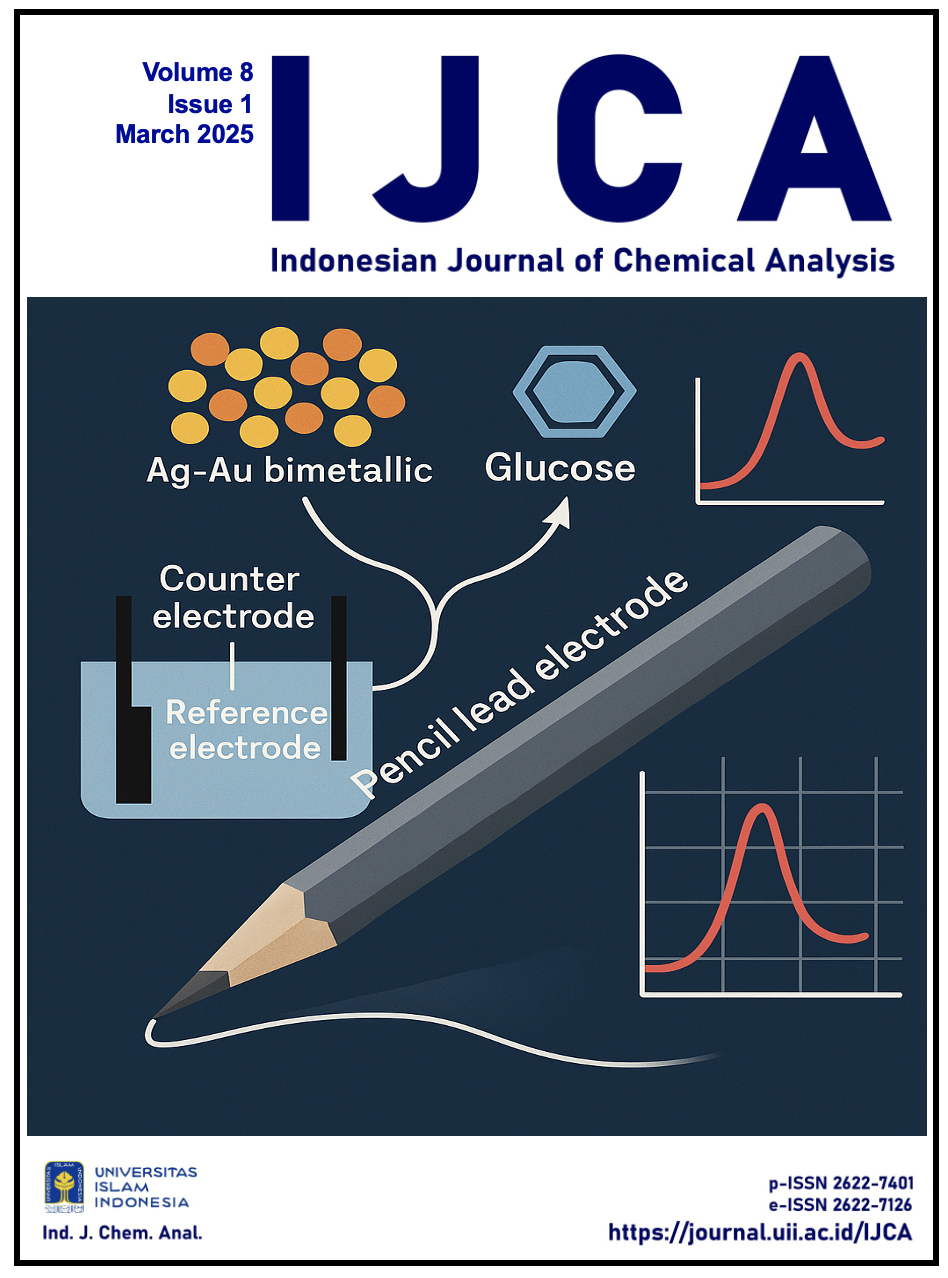Main Article Content
Abstract
Glucose is an essential monosaccharide that serves as the main source of energy in the human body. An imbalance in glucose levels in the body can lead to serious metabolic disorders, such as diabetes mellitus. Therefore, effective methods of analyzing and monitoring glucose levels are needed for early detection and more optimal disease management. In this study, a non-enzymatic glucose sensor based on Pencil Lead Electrode (PLE) modified with silver-gold (Ag-Au) bimetallic was developed through electrodeposition method using cyclic voltammetry. This modification aims to improve sensitivity and cost efficiency in glucose detection compared to enzymatic sensors, that are susceptible to denaturation and higher production costs. Electrodeposition is performed in a potential range of 1.6 V to -0.4 V to obtain an optimal bimetallic coating on the PLE surface. The Ag-Au/PLE electrode provided the best electrochemical response in detecting glucose, with oxidation and re-oxidation peaks at +0.01 V in 0.1 M KOH as a supporting electrolyte. The optimal condition was obtained in five electrodeposition cycles, with a correlation coefficient value of 0.9984 and a detection limit of 0.206 mM, indicating high sensitivity and accuracy. These results indicate that Ag-Au/PLE electrodes have great potential as reliable, sensitive and economical non-enzymatic glucose sensors.
Keywords
Article Details
Copyright (c) 2025 Rahmida Marlini, Trisna Kumala Sari, Alizar Alizar, Romy Dwipa Yamesa Away

This work is licensed under a Creative Commons Attribution-ShareAlike 4.0 International License.
You are free to:
Share — copy and redistribute the material in any medium or format
Adapt — remix, transform, and build upon the material for any purpose, even commercially
Under the following terms:
Attribution — You must give appropriate credit, provide a link to the license, and indicate if changes were made. You may do so in any reasonable manner, but not in any way that suggests the licensor endorses you or your use.
ShareAlike — If you remix, transform, or build upon the material, you must distribute your contributions under the same license as the original
No additional restrictions — You may not apply legal terms or technological measures that legally restrict others from doing anything the license permits




